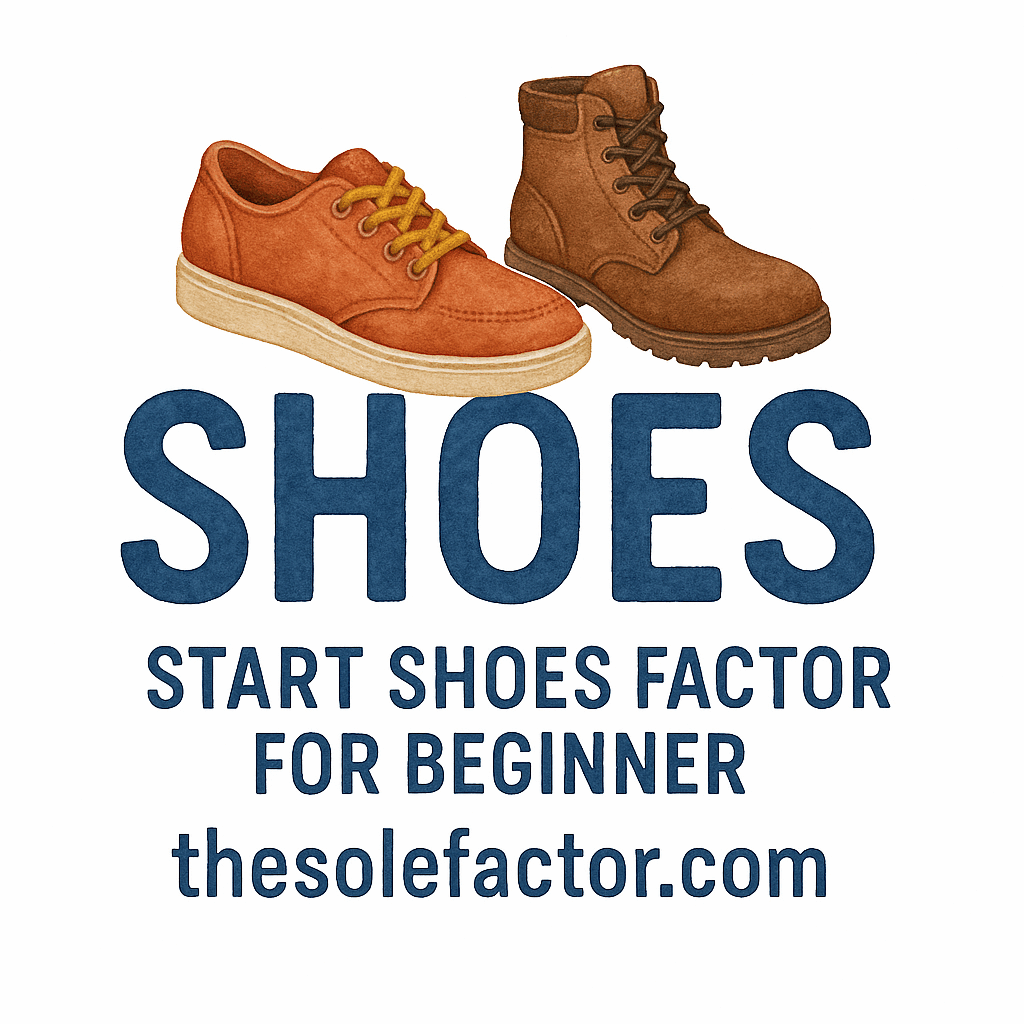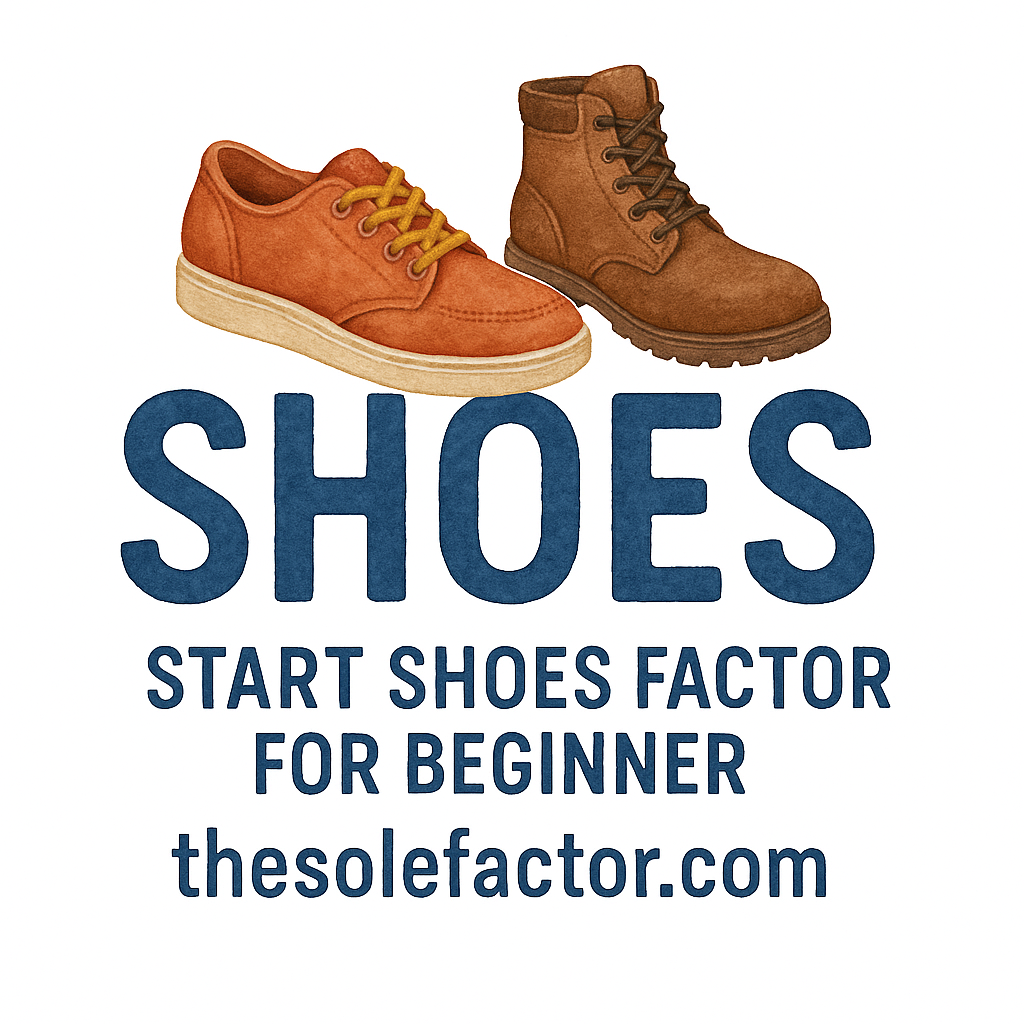Running a successful shoe factory involves more than just skillful craftsmanship. The right tools can make all the difference between a product that meets expectations and one that falls short. Whether you’re creating trendy designs, high-end footwear, or everyday shoes, the tools you use in production can influence everything from quality to efficiency.
In this article, we’ll walk you through 8 essential tools every shoes factory must have and explain how they contribute to the overall process. These tools are not just necessary for speed—they’re vital for producing shoes that are durable, comfortable, and stylish.
Importance of the Right Tools in a Shoe Factory
The right tools can make or break your production line. Each piece of equipment in your factory plays a crucial role in ensuring smooth and efficient manufacturing. In an industry where precision and speed are key, using high-quality tools can drastically improve the overall product quality and reduce operational costs.
Having the right equipment also ensures consistency in design and fit, which is crucial for maintaining a solid reputation in the market. If you’re running a business, it’s essential to use tools that maximize productivity and minimize errors.
Tool #1: Sewing Machines
The sewing machine is the heart of any shoe factory. It stitches together different parts of the shoe—such as the upper, sole, and lining—creating the base of your footwear. Whether you’re producing leather boots or lightweight sneakers, a strong and versatile sewing machine is a must-have.
Types of Sewing Machines
There are several types of sewing machines, each designed to handle different tasks. For instance, single-needle machines are great for simple stitching, while double-needle machines are better suited for complex designs. Walking-foot machines are essential for sewing thick materials like leather and canvas without slipping.
Why Sewing Machines are Essential
Sewing machines ensure that shoes hold together under pressure. A sturdy, well-stitched shoe not only lasts longer but also provides better comfort and support. For custom shoe manufacturers, the flexibility of the sewing machine allows them to experiment with various fabrics, textures, and materials.
Learn more about the role of stitching in shoe design here.
Tool #2: Cutting Machines
Cutting machines are indispensable when it comes to precise and efficient material cutting. These machines allow you to cut leather, rubber, fabric, and other materials with incredible accuracy, reducing wastage and saving time.
Types of Cutting Machines
From die-cutting machines to laser cutters, cutting machines come in all shapes and sizes. Die-cutting machines are often used for mass production of shoe components, while laser cutters can offer intricate designs with minimal material loss. Rotary cutters are popular for cutting fabrics, ensuring quick and precise cuts.
The Role of Cutting Machines in Shoes
Cutting machines ensure each component of the shoe fits perfectly. A precise cut guarantees that each part can be assembled seamlessly, ensuring high-quality footwear. Plus, automated cutting systems allow for better scalability in production.
Read more about cost-effective cutting tools for shoe manufacturing here.
Tool #3: Lasting Machines
In shoe production, lasting machines are crucial for shaping the shoe’s upper over a mold, or “last,” ensuring that it fits properly and comfortably on the foot. This process is what gives shoes their characteristic shape and fit.
Types of Lasting Machines
Manual lasting machines require skilled operators to carefully position the upper on the last, while automatic machines speed up the process, allowing for greater precision. There are also semi-automatic machines that provide a balance between manual control and automation.
Why Lasting Machines Matter
Lasting machines help create shoes that fit well and provide comfort. A poorly shaped shoe can lead to discomfort, blisters, and ultimately, customer dissatisfaction. Properly shaped shoes have a higher chance of success in the marketplace.
Explore more on shoe fitting and design trends here.

Tool #4: Insole Machines
Insoles are a key element of comfort in footwear, and insole machines are designed to produce them with precision. These machines help in shaping insoles to ensure they fit the shoe’s structure, contributing to both the comfort and support of the shoe.
How Insole Machines Work
Insole machines cut, shape, and sometimes add extra cushioning to create the perfect insole for a shoe. These machines often work with different materials, such as foam, memory foam, or leather, to provide varying levels of support.
Tool #5: Molding Machines
Molding is an essential process in shoe production, especially for making soles, heels, and other molded components. Molding machines ensure that the shape and size of these components are uniform and durable.
Types of Molding Machines
Some of the most common molding processes are injection molding, which is ideal for soles, and compression molding, often used for rubber or polyurethane components like heels.
Molding in Shoe Manufacturing
Molding machines are indispensable for producing customized soles and heels. These machines provide precision and ensure consistency in the production of shoe parts. The advantage of molding is the ability to create complex shapes and custom designs, making them an excellent choice for high-quality, designer footwear.
Learn more about machinery used in shoe production here.
Tool #6: Heat Press Machines
Heat press machines play a vital role in sealing materials, applying logos, or adding patterns to shoes. These machines combine heat and pressure to bond materials together, making them an essential part of shoe finishing.
How Heat Press Machines Work
Heat press machines apply heat and pressure to fuse materials, such as fabric, synthetic leather, or vinyl, onto the shoe’s surface. This process is often used for adding branding or decorative designs, as well as sealing seams and edges.
Benefits of Heat Press Machines
Heat presses allow for a smooth and durable finish, making them perfect for mass production of shoes with logos, designs, or special finishes. They also help speed up the manufacturing process while ensuring high-quality results.
Discover more about the production process and equipment here.
Tool #7: Stitching Tools
In some cases, stitching tools go beyond standard sewing machines, focusing on detailed, high-quality stitching. These tools help produce decorative seams and reinforcements that increase the durability and aesthetics of shoes.
Types of Stitching Tools
Stitching tools range from hand-held automatic stitchers for delicate details to heavy-duty stitching machines for reinforcing the structure of the shoe. The precision of the stitch can affect the overall appearance and longevity of the footwear.
Why Stitching Tools are Crucial
Proper stitching ensures that the shoes not only look good but also hold up under stress. Stitching is often a sign of craftsmanship, and shoes with strong, uniform stitching are perceived as more durable and of higher quality.
Find out more about stitching techniques for better shoe designs here.
Tool #8: Quality Control Equipment
Quality control is key to maintaining high standards in your production process. Quality control equipment is used to measure, inspect, and test shoes during the production process to ensure they meet customer expectations.
Types of Quality Control Tools
These include measuring devices to check sizes, tensile testers to assess stitching durability, and visual inspection systems to detect flaws in materials or construction.
The Role of Quality Control in Shoe Manufacturing
Quality control tools help catch defects early in the production process, preventing faulty shoes from reaching customers. Implementing robust quality checks improves customer satisfaction and reduces returns and complaints.
Learn more about effective quality control systems in manufacturing here.
Conclusion
Each tool in a shoe factory plays an integral part in ensuring that the final product meets the highest standards of quality, durability, and comfort. From sewing machines to quality control tools, each piece of equipment enhances the efficiency and precision of the manufacturing process. Investing in these essential tools is an investment in your factory’s future success.
If you’re looking to take your shoe factory operations to the next level, these 8 tools are a great place to start. By upgrading your equipment and ensuring each step of production is efficient and accurate, you’ll produce shoes that are not only functional but also stylish and long-lasting.
Frequently Asked Questions (FAQs)
Q1: Why are sewing machines so important in a shoes factory?
Sewing machines are essential for stitching together the various components of a shoe, ensuring durability and comfort.
Q2: What are the benefits of using cutting machines in a shoe factory?
Cutting machines ensure precise, consistent cuts, reducing material waste and speeding up the production process.
Q3: How does lasting impact shoe quality?
The lasting process shapes the shoe’s upper to fit the foot, ensuring comfort and preventing foot fatigue.
Q4: What is the role of molding machines in shoe manufacturing?
Molding machines are used to create the shape and structure of shoe components like soles and heels.
Q5: What is the advantage of using heat press machines?
Heat press machines allow for seamless bonding of materials and are essential for adding designs, logos, or branding.
Q6: How can quality control tools improve shoe production?
Quality control tools ensure that each shoe meets industry standards, reducing defects and improving customer satisfaction.
Q7: Are there specific tools for different types of shoes?
Yes, depending on the type of shoe being produced, different tools may be used, especially when working with specialized materials or designs.


